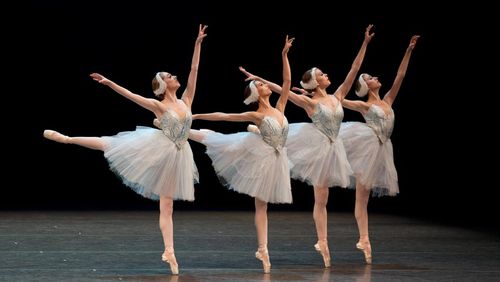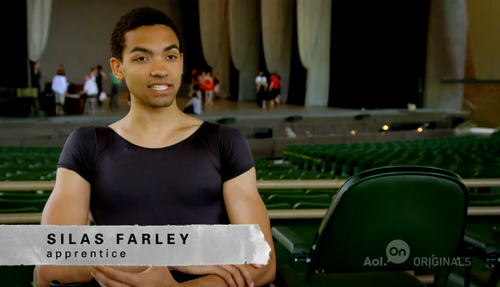
Corps de ballet members performing an excerpt from Peter Martins’s Swan Lake as part of a NYCB "Family Saturday."
James writes:
A cultural highpoint of classical music must be the development of engaging programs for children. Such events combine just the right mix of performance and narration to captivate and educate future generations (while also delighting the parents in tow).
The "Young People's Concerts" series at the New York Philharmonic offers the best, longest, and most consequential example of how this can be done right. The YPCs started as weekend children's matinees back in the late nineteenth century, became a regular feature in 1926, and reached their zenith (and "the Zenith") in the televised broadcasts of Leonard Bernstein starting in 1958. Some years ago, I watched the full run of these TV broadcasts, which is now available in a nine-DVD set from Kultur video, and wrote about it here.
I grew up attending the children's concerts at Lincoln Center (just after the Bernstein era). Now that I have a young daughter, I am back again. But as we've found, just because they are aimed at children, such concerts are not easy to perform well. A good children's concert is not a short, poorly orchestrated, dumbed-down version of an adult concert, which was what we unfortunately found last summer on the lawn at Tanglewood. All the Boston Symphony Orchestra did with that performance was drive a generation away from live performance, or at least the BSO's approximation of it, and back to YouTube. (If you didn't already know, some of the most captivating classical performances for children can now be found online. Just take a look at our current favorite--the Mariinsky's Nutcracker in flawless HD).
Coming off the BSO experience, we were unsure what we'd find at last weekend's New York City Ballet "Family Saturday." Billed as a one-hour presentation "designed especially for family audiences," the performance promised "short works and excerpts from New York City Ballet's diverse repertory" with narrative instruction by NYCB artists "offering insights on the music and choreography."
The answer was the finest children's performance I could imagine. Kept to a captivating, fast-paced hour, the NYCB performed excerpts from the season's repertory. This meant Emeralds with music by Gabriel Fauré, The Concerto Barocco with music by J. S. Bach, Who Cares? with music by George Gershwin, Barber's Violin Concerto, Dances at a Gathering with music by Frédéric Chopin, Todo Buenos Aires with music by Astor Paizzolla, and excerpts from the second and third acts of Coppélia with music by Léo Delibes.
Of the entire selection, the opening performance of Emeralds was the one letdown. At least one of the dancers was off a beat, and viewed from left orchestra, some of the staging was obscured by the musicians who were performing stage right.
But it all came together as soon as the morning's emcee, Silas Farley, stepped on stage. Farley may for now just be a young member of the corps de ballet, but his star quality can already outshine the principals of the company. My daughter and I first got to know about him through the NYCB's new online reality show, a high-production-value if slightly clichéd web series produced by AOL of life inside the company, with Sarah Jessica Parker narrating and ballet master Peter Martins acting as the heel (he would make a great villain in a 1970s-era James Bond film).
Here's a tip for next season's videos: less talking, more dancing. But between the catty gripes, the show did give us a glimpse of Farley, who was filmed the moment he received his contract to join the company. Taking bets now: With his great poise and bright attitude, Farley may one day be, what, Principal Dancer? Ballet Master? President of the United States? Until then we were lucky to catch him leading the NYCB's Family Saturday.
On stage, Farley's enthusiasm for dance was infectious as he (and the show's writers) made intelligent and fun comparisons between the programs--such as the differences between the choreography of George Balanchine in Jewels (with its performance directed at the audience) and Jerome Robbins in Dances at a Gathering (played more towards the other dancers on stage). He helped us appreciate the fun of Martins's choreography in the Barber Violin Concerto (with ragdoll moves by Megan Fairchild). He introduced us to an accordion-like instrument called the Bandoneon, played by JP Jofre, in Todo Buenos Aires. Finally, for Coppélia, with its robotic doll, he had the children of the audience stand up and move like marionettes.
It seems to be just the right metaphor. Here was a concert that pulled every string to further a child's appreciation of ballet.
The NYCB's next Family Saturday is May 10, 2014, hosted this time by Principal Dancer Daniel Ulbricht. Tickets are for general admission and $20 each.
